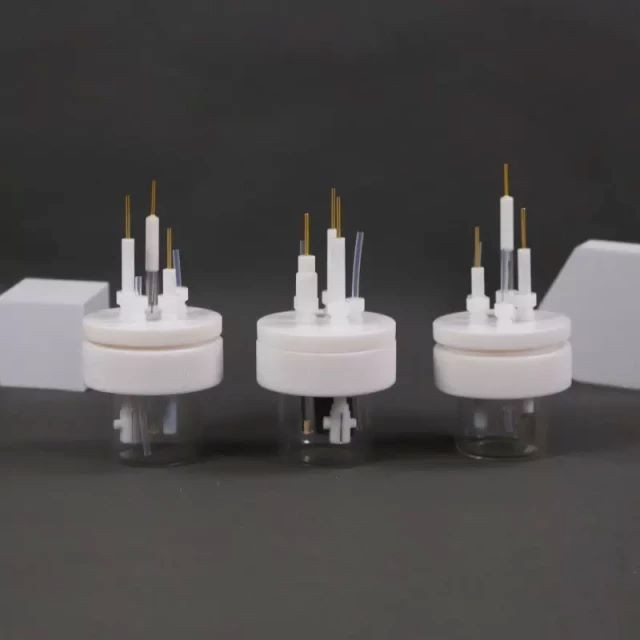
Electrochemical Consumables
Super Sealed Electrolytic Electrochemical Cell
Item Number : ELCS
Price varies based on specs and customizations
$79.00 / set
- Specification
- 30ml ~ 1000ml
- Applicable temperature range
- 0 ~ 60℃
- Sealed form
- Thread + Apron
- Material
- Boron glass + PTFE
Shipping:
Contact us to get shipping details Enjoy On-time Dispatch Guarantee.
Why Choose Us
Reliable PartnerEasy ordering process, quality products, and dedicated support for your business success.
Super-sealed electrolytic cell offers enhanced sealing capabilities, making it ideal for experiments that require high airtightness. corrosion resistance, complete specifications, can be customized
Technical specifications
| Specification | 30ml ~ 1000ml |
| Applicable temperature range | 0 ~ 60℃ |
| Sealed form | Thread + Apron |
| Material | Boron glass + PTFE |
| Electrolytic cell hole | Three electrode holes (6mm), two air holes (3mm), custom openings are available |
Detail & Parts

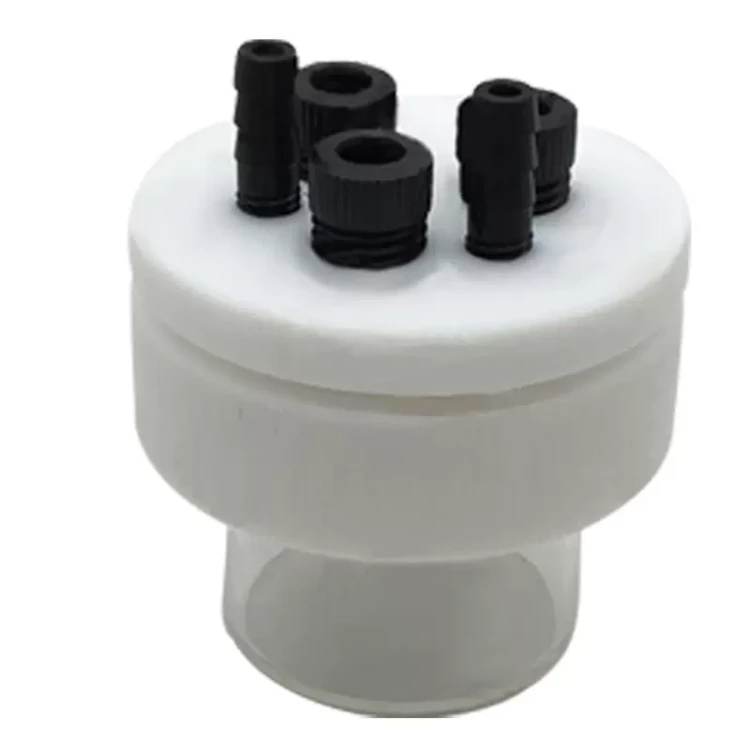
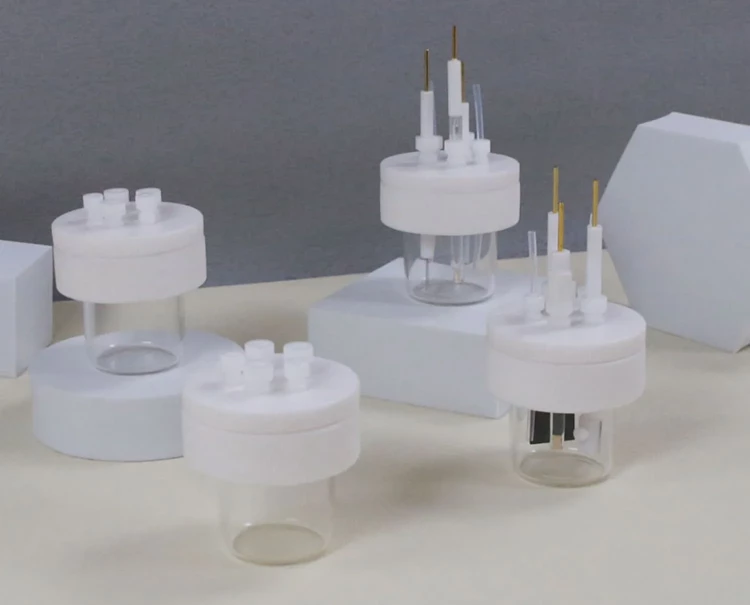
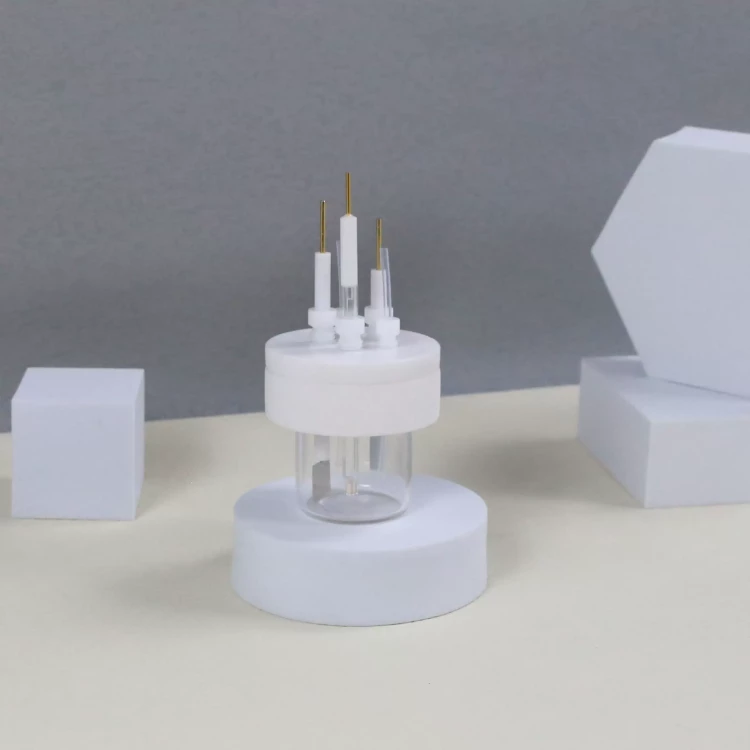
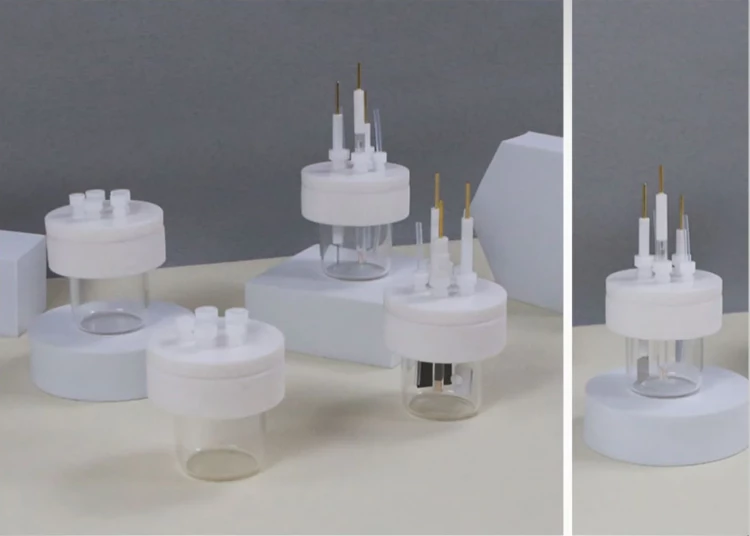
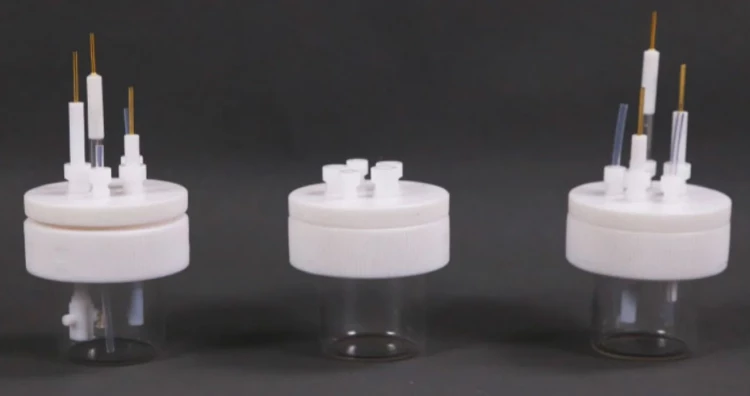
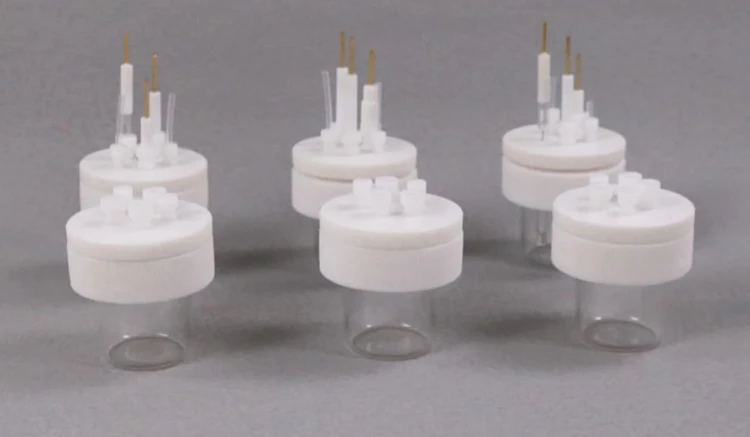
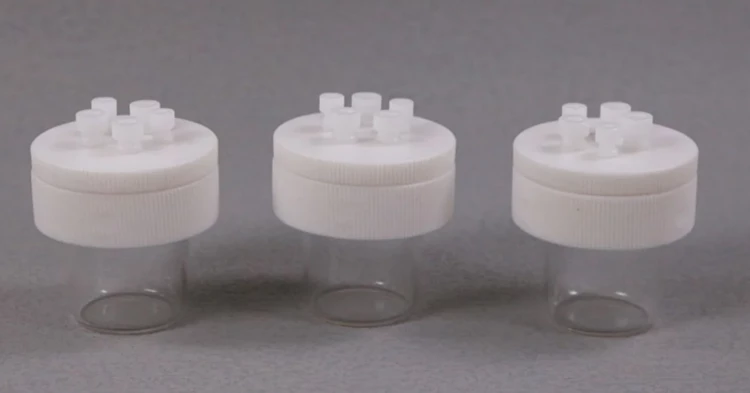
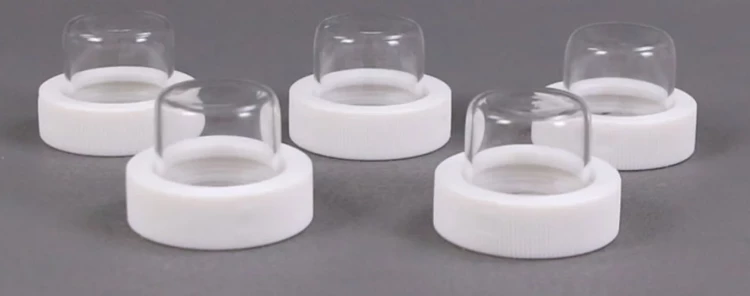
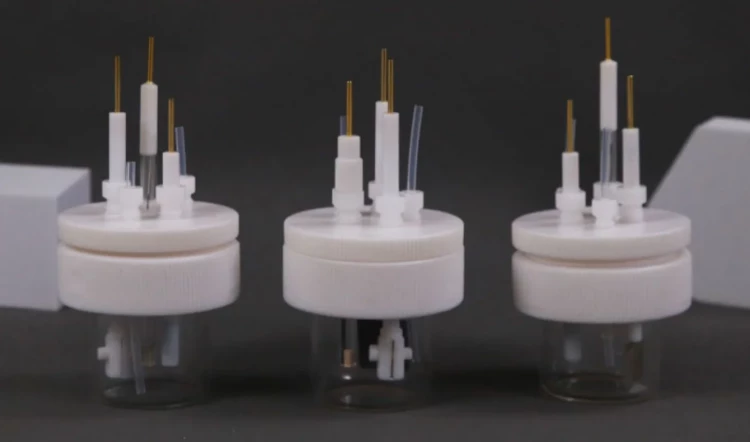
Operating steps
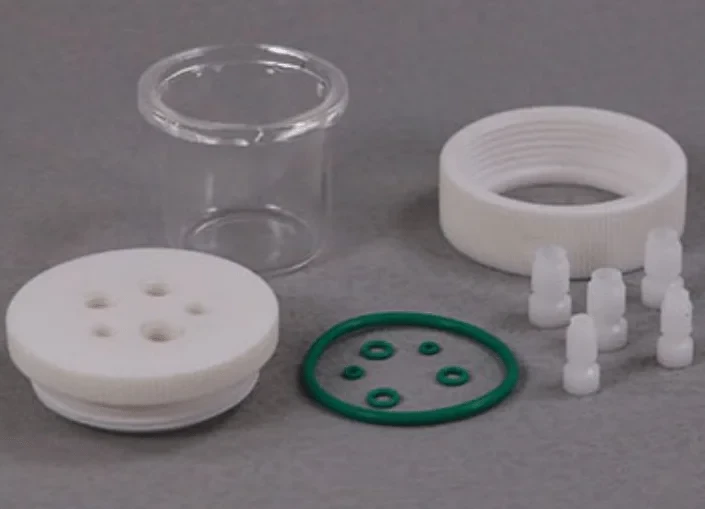
1. The double-layer water bath electrolytic cell comprises a cell body, a polytetrafluoroethylene cover, a sealing rubber ring, and a sealing plug.

2. To install, insert the electrode and gas pipe into the electrolytic cell, and then attach the sealing ring.

3. Install the sealing nut of the electrode, and attach the air hole to the electrode. Next, squeeze the sealing ring and tighten the nut.

4. Install the large sealing ring on the cell body, and ensure that the sealing ring is tightly locked by fully clamping it onto the cover.

5. The installation of the electrolytic cell, which uses a three-electrode system, is now complete.
Designed for You
KinTek provide deep custom made service and equipment to worldwide customers, our specialized teamwork and rich experienced engineers are capable to undertake the custom tailoring hardware and software equipment requirements, and help our customer to build up the exclusive and personalized equipment and solution!
Would you please drop your ideas to us, our engineers are ready for you now!
FAQ
What Are Electrolytic Cells Used For?
What Is The Difference Between Galvanic Cell And Electrolytic Cell?
What Is An Electrolytic Cell And How Does It Work?
What Are The Two Points Of Difference Between Electrochemical And Electrolytic Cells?
What Is The Example Of Electrolytic Cell?
Are Electrolytic Cells Spontaneous?
4.8
out of
5
Fantastic product! The super sealed electrolytic cell is a lifesaver in the lab. Experiments are much more efficient and precise now.
4.7
out of
5
Excellent quality and value for money. The cell is well-made and easy to use. Highly recommend!
4.9
out of
5
The delivery was incredibly fast. I received the cell within 3 days of ordering. Amazing service!
4.6
out of
5
The cell is very durable and has withstood several experiments without any issues. Highly satisfied with the product.
4.8
out of
5
The technological advancement of this cell is impressive. It has features that make experiments much easier and more accurate.
4.7
out of
5
The cell is very user-friendly and easy to set up. Even a novice can use it without any problems.
4.9
out of
5
The cell is compact and takes up very little space in the lab. It's a great space-saving solution.
4.6
out of
5
The cell is very versatile and can be used for a wide range of experiments. It's a great all-rounder.
4.8
out of
5
The cell is very reliable and has never failed me during an experiment. It's a trustworthy piece of equipment.
4.7
out of
5
The cell is very affordable and offers great value for money. It's a great choice for budget-conscious labs.
4.9
out of
5
The cell is very easy to clean and maintain. It's a breeze to keep it in top condition.
4.6
out of
5
The cell is very well-packaged and arrived in perfect condition. KINTEK SOLUTION takes great care in shipping their products.
4.8
out of
5
The cell is very lightweight and easy to handle. It's a great choice for labs with limited space.
4.7
out of
5
The cell is very quiet during operation. It doesn't create any distracting noise in the lab.
4.9
out of
5
The cell is very energy-efficient and doesn't consume a lot of power. It's a great choice for labs that are looking to save on energy costs.
REQUEST A QUOTE
Our professional team will reply to you within one business day. Please feel free to contact us!
Related Products

PTFE Electrolytic Cell Electrochemical Cell Corrosion-Resistant Sealed and Non-Sealed
Choose our PTFE Electrolytic Cell for reliable, corrosion-resistant performance. Customize specifications with optional sealing. Explore now.

Quartz Electrolytic Electrochemical Cell for Electrochemical Experiments
Looking for a reliable quartz electrochemical cell? Our product boasts excellent corrosion resistance and complete specifications. With high-quality materials and good sealing, it's both safe and durable. Customize to meet your needs.

Electrolytic Electrochemical Cell with Five-Port
Streamline your laboratory consumables with Kintek's Electrolytic Cell with five-port design. Choose from sealed and non-sealed options with customizable electrodes. Order now.

Electrolytic Electrochemical Cell Gas Diffusion Liquid Flow Reaction Cell
Looking for a high-quality gas diffusion electrolysis cell? Our liquid flow reaction cell boasts exceptional corrosion resistance and complete specifications, with customizable options available to suit your needs. Contact us today!

Electrolytic Electrochemical Cell for Coating Evaluation
Looking for corrosion-resistant coating evaluation electrolytic cells for electrochemical experiments? Our cells boast complete specifications, good sealing, high-quality materials, safety, and durability. Plus, they're easily customizable to meet your needs.

Multifunctional Electrolytic Electrochemical Cell Water Bath Single Layer Double Layer
Discover our high-quality Multifunctional Electrolytic Cell Water Baths. Choose from single or double-layer options with superior corrosion resistance. Available in 30ml to 1000ml sizes.

H-Type Double-Layer Optical Electrolytic Electrochemical Cell with Water Bath
Double-layer H-type optical water bath electrolytic cells, with excellent corrosion resistance and a wide range of specifications available. Customization options are also available.

Optical Water Bath Electrolytic Electrochemical Cell
Upgrade your electrolytic experiments with our Optical Water Bath. With controllable temperature and excellent corrosion resistance, it's customizable for your specific needs. Discover our complete specifications today.

Flat Corrosion Electrolytic Electrochemical Cell
Discover our flat corrosion electrolytic cell for electrochemical experiments. With exceptional corrosion resistance and complete specifications, our cell guarantees optimal performance. Our high-quality materials and good sealing ensure a safe and durable product, and customization options are available.

Elevate your electrochemical research with our Rotating Disk and Ring Electrodes. Corrosion resistant and customizable to your specific needs, with complete specifications.

Looking for a high-quality gold disc electrode for your electrochemical experiments? Look no further than our top-of-the-line product.

Electrode Polishing Material for Electrochemical Experiments
Looking for a way to polish your electrodes for electrochemical experiments? Our polishing materials are here to help! Follow our easy instructions for best results.

Proton Exchange Membrane for Batteries Lab Applications
Thin proton exchange membrane with low resistivity; high proton conductivity; low hydrogen permeation current density; long life; suitable for electrolyte separators in hydrogen fuel cells and electrochemical sensors.

Lab Electrochemical Workstation Potentiostat for Laboratory Use
Electrochemical workstations, also known as laboratory electrochemical analyzers, are sophisticated instruments designed for precise monitoring and control in various scientific and industrial processes.
Related Articles

The Architecture of Silence: Mastering the Super-Sealed Electrolytic Cell
Great electrochemical data starts before the experiment begins. Master the four critical steps of cell preparation—inspection, cleaning, installation, and loading.

The Architecture of Control: Mastering the Super-Sealed Electrolytic Cell
Precision in electrochemistry isn't just about theory; it's about mechanical discipline. Learn the critical protocols for super-sealed electrolytic cells.

The Transparency Paradox: Mastering the Fragile Art of Electrolytic Cells
Glass electrolytic cells are precision instruments, not simple containers. Learn the systematic approach to handling glass to ensure safety and data integrity.

The Glass Heart of the Experiment: Precision Through Systematic Care
Routine maintenance of double-layer electrolytic cells isn't just cleaning—it's calibration. Discover the systematic protocol for reproducible electrochemical data.

The Silence of the Seal: Why Electrochemical Precision is a Battle Against the Atmosphere
Precision in electrochemistry isn't just about voltage; it's about isolation. Discover how super-sealed cells defeat contamination and define reproducibility.

The Architecture of Precision: Mastering the Five-Port Water Bath Electrolytic Cell
Mastering the electrolytic cell is not just about chemistry; it is about discipline. Learn the systematic approach to preparation, operation, and maintenance.

The Architecture of Precision: Why the Invisible Details Define Electrochemical Success
Master the art of pre-use inspection for electrolytic cells. From physical integrity to electrode purity, learn why the invisible details dictate experimental safety.

The Silent Variable: Why Meticulous Cell Care Defines Electrochemical Truth
Discover why rigorous maintenance of super-sealed electrolytic cells is the secret to reproducible data. Expert tips on cleaning, storage, and electrode care.

The Architecture of Isolation: Deconstructing the Super-Sealed Electrolytic Cell
Discover the engineering behind super-sealed electrolytic cells. We analyze the critical role of PTFE flanges and how total atmospheric isolation protects sensitive research.

The Vessel of Truth: Why the Container Matters More Than the Chemistry
The success of an electrolytic experiment often hangs on the material of the cell body. Discover the trade-offs between Borosilicate, Quartz, and PTFE.

The Silent Dialogue: Mastering Control in Electrolytic Cells
Electrolysis is a non-spontaneous act requiring precise control. Learn to interpret the interplay of voltage, current, and physical phenomena for safer lab results.

The Glass Heart of the Experiment: Mastering the Electrolytic Cell
Master the art of handling electrolytic cells. Learn the critical balance between physical fragility, chemical safety, and operational precision.